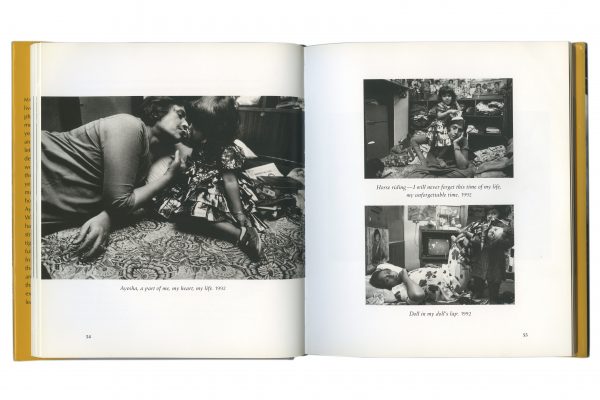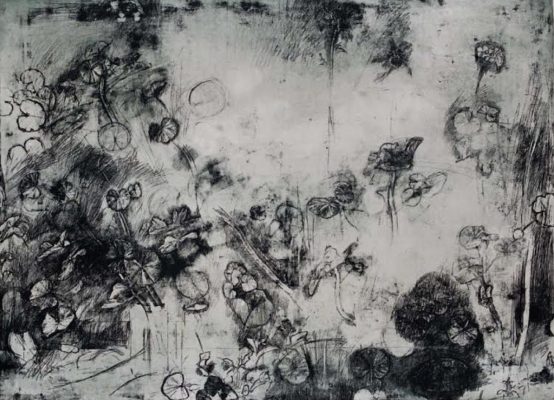Myself Mona Ahmed is a photobook and a work of epistolary world-building. Published in 2001 by Scalo, it comprises photographs of the life of Mona Ahmed, a woman who lived in the heart of old Delhi, and letters in which Mona tells her life story. She addresses the letters to Walter Keller, the publisher, and signs them off ‘With love, Myself, Mona Ahmed’. The images in the book were taken by the artist Dayanita Singh, Mona’s friend, sibling, parent, lover, confidante – Singh struggles to give their relationship a name. She met Mona in 1989, while on assignment for The Times UK newspaper. She walked down Akbar Milkman’s Lane, in the historic neighbourhood of Turkman Gate, to the house of Sona and Chaman – a famous pair of hijras from old Delhi, known for their high glamour and elegant dances. Mona, who was Chaman’s student at the time, opened the door. Covered in jewellery and delicate makeup, she posed for Singh’s camera for hours, only to ask for the film roll, because she wasn’t happy with where the images were to be published. The exchange of that first roll of film was the start of a decades-long friendship.
Mona was raised in middle-class Delhi, separated from family in Pakistan because of Partition. As a child, she read the Quran, played with her dolls and dreamt of becoming a performer. When Mona was estranged from her family she found a home with the hijra community. She danced at weddings, housewarmings and children’s naming ceremonies; she gave blessings, she sang. In 1990, she adopted a baby girl, Ayesha, whose birthmother had died during childbirth. Ayesha was orphaned, and left in Mona’s care by her grandmother. ‘I distributed sweets in the neighbourhood and recited the azaan (Muslim prayer) in her ears,’ Mona writes in a letter to Keller, ‘I wanted to give her all the world’s happiness.’ For Ayesha’s first few birthdays, Mona hosted elaborate parties, inviting hijras from India, Pakistan and Bangladesh. Singh was the designated photographer, and the images are magnetic, each detail revealing the thoughtful extravagance of Mona’s world: flower bracelets to welcome the guests; special dances; live music; feasts with elaborate buffets and espresso machines.
‘Love is like the moon. When it is full it lights the whole world,’ Mona wrote, and she was a doting, attentive mother. She dressed Ayesha for school, and bought her the most expensive fruit from the market. But one day, without notice, Chaman took Ayesha away. Thus began the process of Mona’s second estrangement: driven by grief, she moved into her family’s ancestral graveyard in Mehendiyan in northern New Delhi. She started a new life in a makeshift home, built atop and around the graves. She became the subject of films, novels, poetry, her story a living legacy of survival and resistance that inspired generations of young trans and queer people. ‘Our society is like that. They cannot see beyond our being a eunuch. They forget we have a heart, a mind, a point of view,’ says Mona in a letter included in the book.
Mona passed away in 2017, and Myself Mona Ahmed has never been reprinted. To commemorate the twentieth anniversary of the book’s release, The White Review invited teacher and philosopher Vikramaditya Sahai to speak with Singh about making Myself Mona Ahmed, and her memories of its star. Sahai’s writing – especially on desire, community and gender – plays an essential role in contemporary discourse in the Indian subcontinent. Their conversation was an ode, a memorial, a Zoom-call wake.



